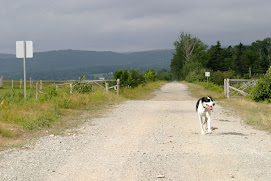The Chronicle reports that “Over the years, Cambridge has implemented elements of a climate protection plan, with goals to reduce greenhouse gas emissions and the community’s carbon footprint”
(Chronicle 5/13/09).
As noted on the City website, “in 1999, the City Council passed a resolution to join the Cities for Climate Protection (CCP), a campaign of ICLEI-Local Governments for Sustainability.” Since then, “Climate Protection Initiatives” have flourished, including the Cambridge Energy Alliance, Team GreenSense, GoGreen Month and the GoGreen Awards, Green Decade/Cambridge, the Cambridge Climate Leader Program, the EcoTeam Pilot Project, etc. Cambridge also collaborates with regional and statewide efforts like the Mass Energy Consumers Alliance, Renewable Energy Trust, Massachusetts Interfaith Power & Light, Solar Boston, New England Wind Fund and Commonwealth Solar.
The City’s Climate Protection Plan (it’s an official plan, complete with a beautifully designed 120-page book available on the City website) is run by the Department of Community Development, which in FY10 has a budget of $5.06 million. A million dollars of this budget is allocated to the Environmental and Transportation section, of which an unspecified portion goes to Climate Protection. The Plan contains a number of sensible programs: promoting energy efficient buildings, encouraging city employees to turn off lights in empty rooms, planting trees, for example.
It seems that Cambridge is already doing quite a lot to protect us from the climate. (Or is it to protect the climate from us?)
City Councilor Henrietta Davis stated to the Chronicle, however, that present efforts are “not enough. We have to do more.” Why, given the success of the green agenda in Cambridge, would Councilor Davis appear frustrated by the lack of progress?
According to Councilor Davis’s website, Cambridge has “adopted the goal of reducing greenhouse gas emissions by 80%.” In the real world, reducing 80% of CO2 emissions is not realistic, and if any coalition gains sufficient political power to impose it on the world it will cause massive economic disruption, bringing suffering disproportionately to the world’s poor nations. Furthermore, even this drastic curtailment of carbon-based energy will have little effect on global warming. Manmade CO2 accounts for a miniscule one tenth of one percent of greenhouse gasses; 95% is water vapor, which to date has escaped regulatory efforts.
The Cambridge Climate Protection Plan proposes a more realistic GHG Reduction Strategy of “purchas[ing] 20% of electricity from green power sources.”
There’s one difficulty with this goal. As the Plan notes: “Currently, the availability of renewable energy supplies in New England is very limited.” To give an idea of scale: one of the City’s goals under the Cambridge Energy Alliance is “to reduce energy demand by 50 megawatts to bring its peak electricity demand down to approximately 300 megawatts”—or 300 million watts. A solar energy project in Porter Square commended by the Plan has photovoltaic panels rated at 20 KW, or 20,000 watts. Even at 100% efficiency (in New England, 40% is more likely), Cambridge would need at least 15,000 Porter Square sized installations to supply its peak electrical power. By contrast, the natural gas power plant in Charlton has an output of 360 MW, enough to meet peak demand in Cambridge.
Regarding municipal usage: City Hall and thirteen other city buildings use 3.7 million kilowatt hours of electricity per year, while the Porter Square solar panels generate 22,000 kwh per year; thus it would require 170 solar installations to power municipal buildings, or 34 such arrays to provide 20% green electricity.
I don’t doubt that solar power has a role to play in our future energy mix. The day may come when all new construction uses solar panels as roofing material, but at present there is basically no green electricity for Cambridge to buy. The only solution, as the budget states, is the “purchase of renewable energy certificates.” Rather than buy non-existent electricity from solar and wind generation, Cambridge donates money to a non-profit called the Conservation Services Group, which according to their website, ”work[s] with renewable generators to capture value in the emerging, expanding regional REC markets. And we help energy consumers access the RECs they need.” It all seems a bit vague. What exactly do we accomplish with Cambridge tax money?
These RECs have been compared to medieval indulgences, which allow a sinner to purchase absolution. Even if the REC market is an effective means of encouraging struggling solar and wind power entrepreneurs, why is our City making donations on our behalf? Shouldn’t we as individuals decide which non-profits we’d like to support?
Thursday, June 11, 2009
Subscribe to:
Comments (Atom)

